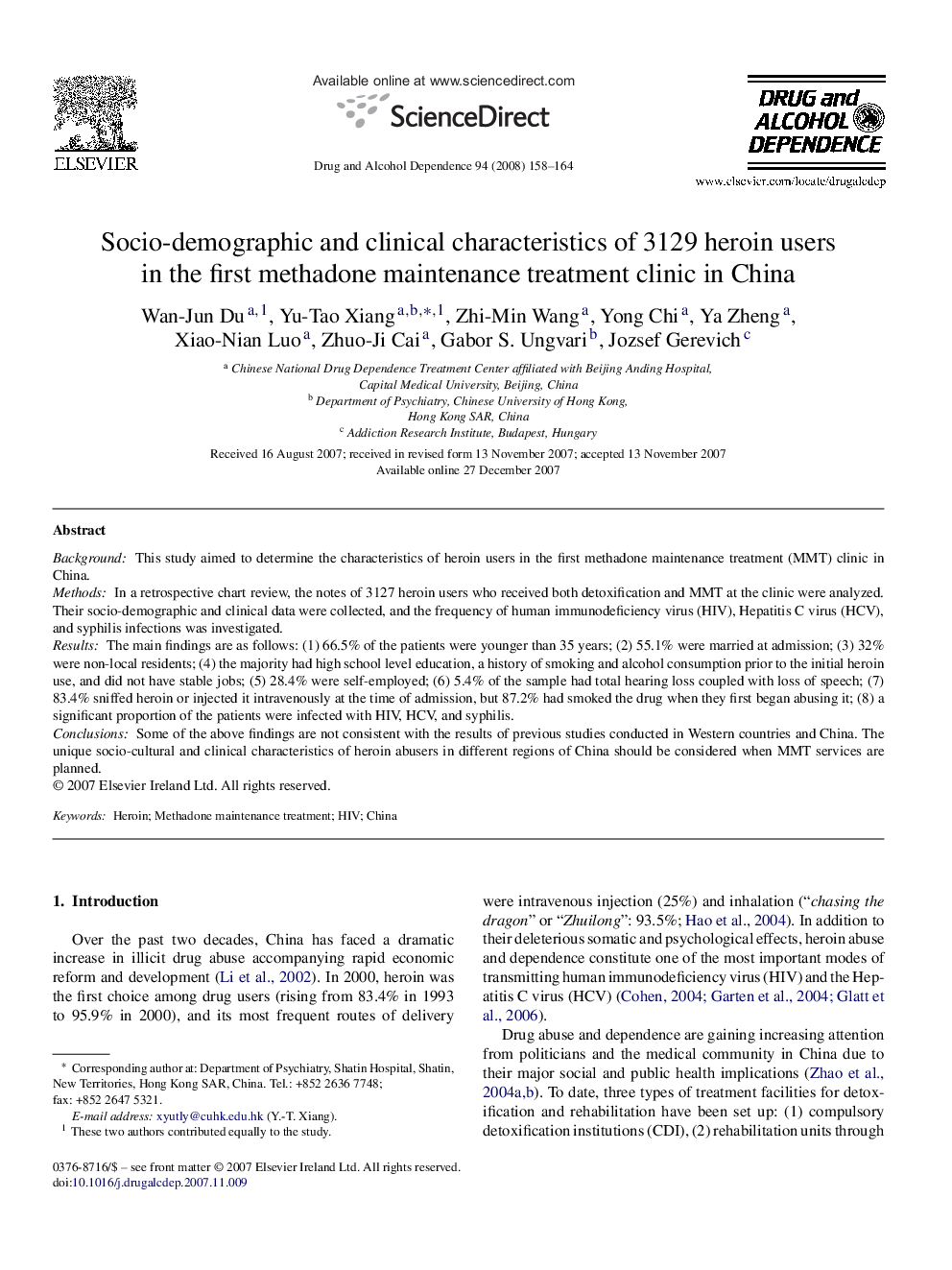| Article ID | Journal | Published Year | Pages | File Type |
|---|---|---|---|---|
| 1071139 | Drug and Alcohol Dependence | 2008 | 7 Pages |
BackgroundThis study aimed to determine the characteristics of heroin users in the first methadone maintenance treatment (MMT) clinic in China.MethodsIn a retrospective chart review, the notes of 3127 heroin users who received both detoxification and MMT at the clinic were analyzed. Their socio-demographic and clinical data were collected, and the frequency of human immunodeficiency virus (HIV), Hepatitis C virus (HCV), and syphilis infections was investigated.ResultsThe main findings are as follows: (1) 66.5% of the patients were younger than 35 years; (2) 55.1% were married at admission; (3) 32% were non-local residents; (4) the majority had high school level education, a history of smoking and alcohol consumption prior to the initial heroin use, and did not have stable jobs; (5) 28.4% were self-employed; (6) 5.4% of the sample had total hearing loss coupled with loss of speech; (7) 83.4% sniffed heroin or injected it intravenously at the time of admission, but 87.2% had smoked the drug when they first began abusing it; (8) a significant proportion of the patients were infected with HIV, HCV, and syphilis.ConclusionsSome of the above findings are not consistent with the results of previous studies conducted in Western countries and China. The unique socio-cultural and clinical characteristics of heroin abusers in different regions of China should be considered when MMT services are planned.
